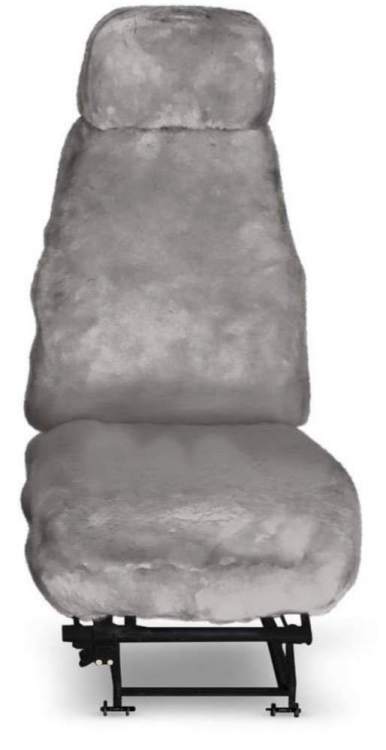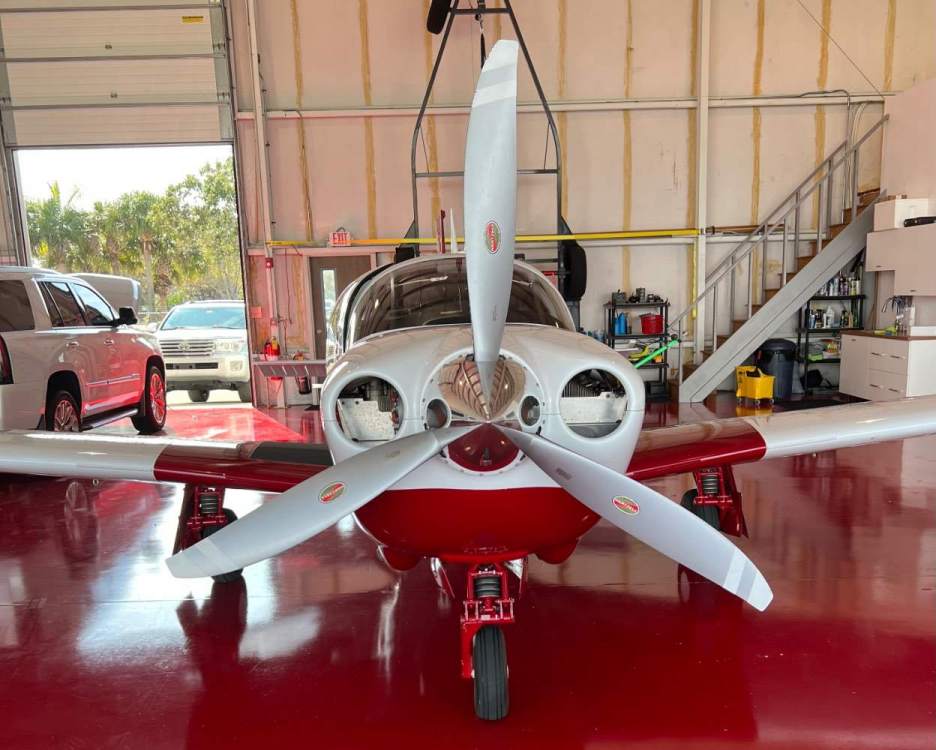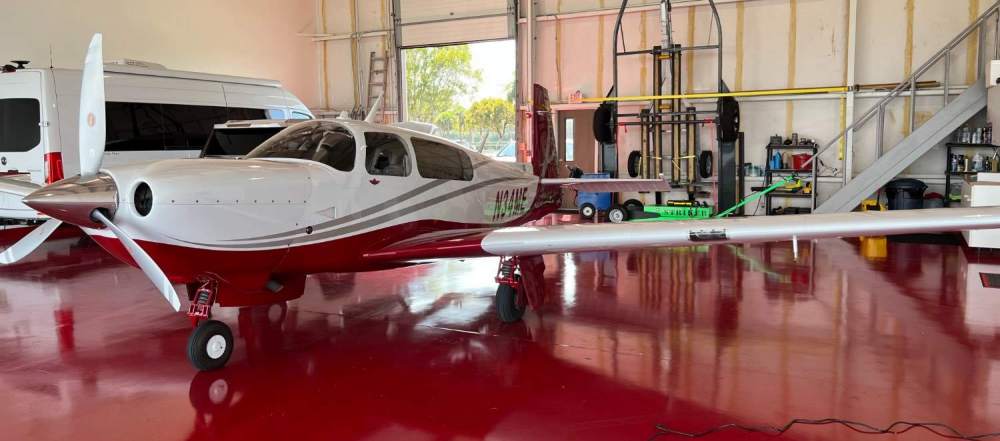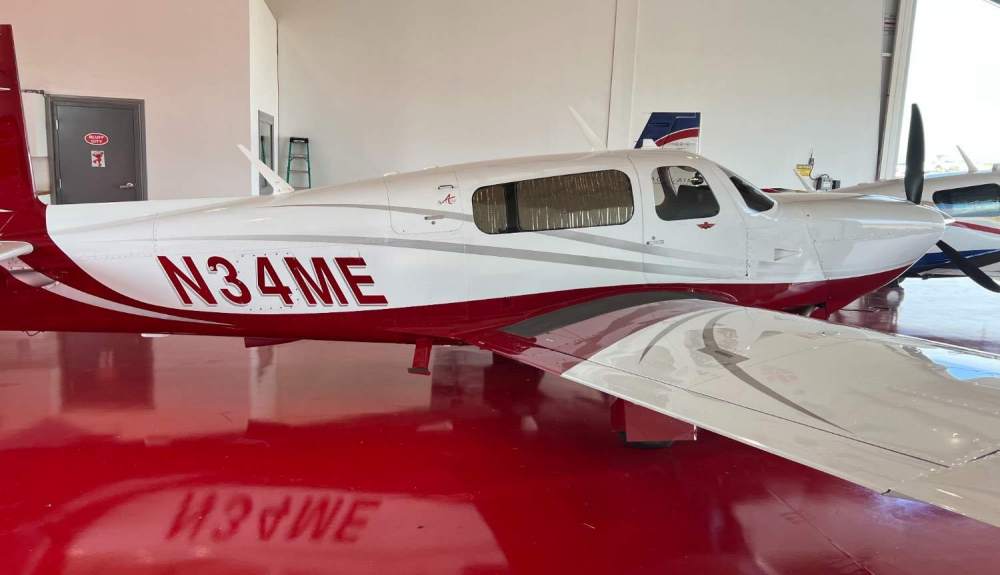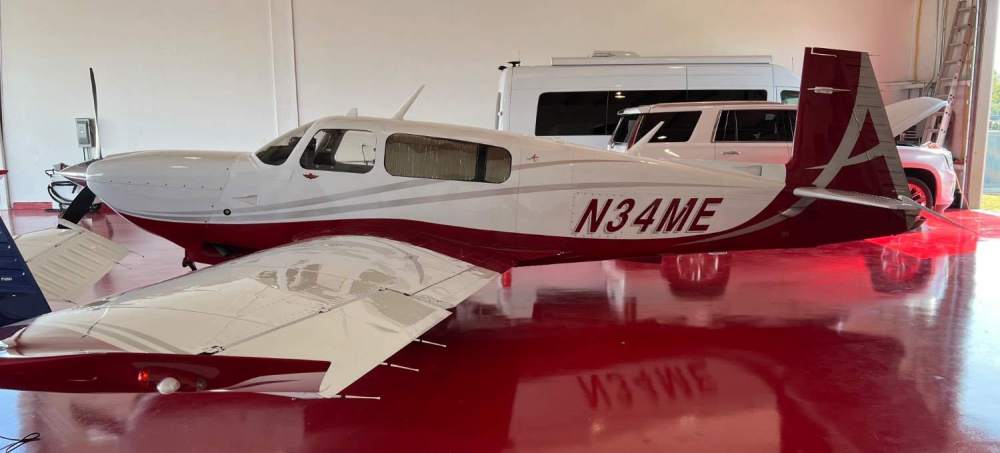-
Posts
1,939 -
Joined
-
Days Won
14
Content Type
Profiles
Forums
Blogs
Gallery
Downloads
Events
Store
Everything posted by Schllc
-
I have four of these, I am willing to sell in pairs. They are like brand new, but don’t match my mew plane. one set has a hold cut for the arm rest, the other three are as new. Two of the buckle straps are broken, one on two of the seats but they aren’t really necessary anyway. The one that’s really needed is the once across the backs and these are fine. I also have headrest covers(all four) and seatbelt sleeves(only three of these). they sell new for $420 per seat before tax per cover with the headrest and seatbelt sleeve. I would think that $620 per set of two is fair. (Shipping is included to the upper 48) If interested let me know. (PS, you are asked on the website to select between front and rear seats but there is no difference and they are 100% interchangeable schllc@aol.com Or two 3nine two four 8 O nine 8 two
-

TKS and IFR people. What is your procedure?
Schllc replied to r0ckst4r's topic in Modern Mooney Discussion
This thread has been very edifying. While I just got my first Mooney with fiki, I don’t anticipate it really changing how I plan my flights I would venture to bet that unless you have actually been in really severe icing conditions, you really can’t imagine how bad it can get, and how quickly it can get that bad. I believe most people underestimate this phenomenon, but once it happens to you, if you survive, you don’t forget it. My single engine piston doesn’t ever need to plan to tangle with ice, my purposes are purely for escape and incidental. -
-
140 hours for me, between planes for three months and née plane went straight to annual for two months, and a viscous sinus infection kept me down a few weeks as well. my new ride has fiki, so looking forward to a busy flying year in 2022! Merry Christmas All!
-
I highly recommend a conserver demand system. It isn’t just saving money on fills. a three hour flight on constant flow ravaged my sinuses to the point of a bloody nose the next day. I’m sure everyone isn’t as sensitive, but the demand systems only disperse when you inhale and are so much more comfortable. There are several brands that work with portable bottles and the less you use the smaller bottle you need. I flew a 182 from Louisiana to Idaho and that bottle and hoses were always in the way and tangled. most that have flown with me and used regular oxygen really like the demand style o2. I can’t say enough good things about it, and won’t own a plane without one type of the systems.
-
Been there done that! Hard to live without a Mooney in the stable!
-
Oops!!! Just did that today! Not a good day for flying in North Georgia. I lived to tell the tale, but it’s a good point.... Fortunately, Joe Cole did a really nice job on the plane, and it ran really well with no issues all the way back to south Florida. I highly recommend his shop btw, really good communication, very fair pricing, and a heck of a nice guy
-
LOL, I fear you’ve missed my point but that’s ok, and thank you for reminding me why I don’t do any social media. For what it’s worth, I’ve only owned Mooney’s with g1000’s, and so is my new sled, with FIKI! My Christmas present to myself! Enjoy whatever it is you fly, and safe travels! All of us here are all fortunate to be able to fly anything at all.. Merry Christmas!!
-
I will be selling my 2009 Acclaim after Jan 1 because I finally found my fiki bird. Here are the specs: 530 hours with about 210hours on a top overhaul. Not sure why it was done other than at point of last sale, logs showed decent compressions. Its got pretty much anything you could get on a 2009, and a few things you couldn’t! Runs great LOP. Gray interior with red piping on the seats No damage history, GFC700, WAAS, ADSB in/out, Monroy tanks (130 gal), SVT, jeppesen chart unlock, active traffic, VNAV, Bose jacks in front and rear, amsafe seatbelts in front, Air Conditioning, 500 hour mags done, new tires, new shock discs, new door seals, new wind lace, latest garmin software, one turbo was done at this annual, fuel gauges just recalibrated, and fresh annual from Cole aviation in Dalton Georgia. Have digital logs available on request If you are serious and interested or have questions, please contact me at schllc@aol.com, provide me a name and contact information and I will get in touch with you.
-
I also have to refute the comment about the g1000 not being “serviceable”. I have had to replace a screen and it was done for less than half of what the other poster suggested, and the turn around from Garmin was three days. All in all the repair was $2,700 parts and labor. There are thousands of planes with this platform and Garmin will provide complete support for the foreseeable future. My experience as an owner of several g1000 planes just isn’t the horror story that all those who don’t own them claim. I completely understand why someone would elect to buy something else, but let’s not conflate preference and opinion with facts. The fact is that while the g1000 is not the latest avionic discovery, its function and capability is still amazing and provides better situational awareness and system integration than almost any other panel available for small GA planes. Waas for these legacy planes that aren’t equipped is a challenge, but it’s also a myth that it’s impossible, or will be, to do. While not having is an obvious limitation, I’d put a years pay that there are more non ga planes out there without Waas than g1000 planes, because for most of us, it’s just not required. To provide the equivalent functionality and interface using the g3, 750, along with engine management etc would cost 100k+ and lots of downtime, and the result would be at best a modestly faster platform with a touch screen. Lastly, Im not trying to persuade anyone to buy a g1000 or convert those that are convinced otherwise. I just think that a fair representation from an owners perspective is important for those on the fence or curious about the Pro’s and cons. I’ve said it before, and it bears repeating, I have yet to meet someone who bought any version of a g1000 and regrets it, and I know several who sold their g1000 planes for models without and miss them. Everything in aviation is a trade off, and for me, whatever flaws and limitations the g1000 present, are well worth them for the safety and comfort it provides me.
-
Maybe a better question is, what on the g1000 needs to be upgraded? What does a “modern panel” do that a g1000 won’t? My g1000 already has smartglide with the nearest/enter/enter, engage AP.
-
Only as used units, unless you can find a garmin dealer that has old stock. You will need to hunt for them but they are out there. In addition to the boxes, you will probably need an additional antenna and a shop that can install that as well as the software. When shopping you need to check with garmin to see which versions of the boxes will work. If I remember correctly there are either three or four versions of the gia63w and of the two planes that I upgraded to Waas, only two of the versions were compatible with my planes. I would expect to pay in the neighborhood of 10k per box on the used market. Buying ones that are inoperable are ok too because garmin has a flat rate for overhaul that used to be $1500 per box, and yes they still service them.
-
I was told they all come with tuned injectors but I can tell you from experience, if that’s the case then their quality control is crap. Some have run fine without gami injectors and some needed them just to run lop
-
If you don’t have gami’s yet and have the software in your g1000 for data logging, I would take a long flight with several sessions of leaning to lop, and rop and send to gami for evaluation. I had a horrific spread in one of my acclaims and the plane really didnt like lop. It actually took four rounds of injector revisions by gami to dial it in. My rop operation went from 22.8gph to 18.5gph with better temps and no speed loss, and it ran beautifully lop. My ultra was close enough where gami said that plane didn’t need them. My current acclaim didn’t have the software upgrade for data logging so I haven’t been able to send it in for them to evaluate yet, but I will, and I can attest that gami injectors can easily pay for themselves. +1 on the fine wires as well !!
-
Completely agree with this comment, also..... I would submit that with less than 200 acclaims in existence, probably less than 25 of them converted to 310hp, with a broad array of pilots and variety use/abuse, it’s really hard to say with certainty what the long term affects would be to the engine with this modification. I don’t understand the physics of why this is bad for a TN engine when engine pressures and temps are basically no different from a NA engine. I have owned several acclaims and ovations and I can tell you that the 310hp ovation in the first 500 feet of climb is a radically different experience from the 280hp acclaim. The stock acclaim climb is anemic in comparison in that very critical phase of flight. after 500’ they are equal for a bit and the acclaim eventually then climbs the ovation. My first three acclaims were 280hp, and my current one has the 310hp upgrade. It is amazing and I have no regrets, even if it somehow causes extra wear and tear, it would be predicated on how you fly it. Which I happen to feel is non existent at best and minimal at worst. If you fly around at 2700rpm and 30.5”mp, its probably rational to say it will shorten the engine life. However, take off out of of an airport like north perry in Hollywood Florida, and you may feel differently about the value of that first 500’ of power in the climb. This airport has no viable landing spot for a sudden loss of power below 500’. You are hitting a building, period. I experienced this the first time on my first flight in an acclaim after two years of flying a 310hp ovation. Make no mistake, I was acutely aware of the difference in the two minutes my back pockets were touching.... Everything in aviation is a trade off, and whatever possible long term effects of extracting 10% more hp from my engine, in the first 2 minutes of my flight to get to a safe altitude quicker, is well with that trade off for me. but to each their own...
-
For me, as an student pilot when I bought my first g1000 ovation, it took me a good 15-20 hours to get the hang of the g1000, double that to get completely comfortable, and probably six months before I mastered(not sure you ever really master, but for lack of a better word...) The thing that prohibits a quicker transition is you don’t always get to choose the functions you execute because of conditions and atc. I tried a simulator but without the other tasks to integrate it didn’t really advance my learning past the initial familiarization. Given how much experience you have, I would think it will take you a fraction of the time it took me. It will click pretty soon. Aside from some things being a little less intuitive than they could be, like loading airways, it’s really pretty easy to learn.
-
I’m not sure it’s normal. I have been in temps close to that and I couldn’t turn the heater past two notches or everyone would be sweating. I would check the hoses connecting the heat exchanger, on both sides. the heater on the planes I have had, have definitely had excess capacity.
-
Here ya go M20TN_IPC_280.pdf
-
I was told the transition tube was on the right side, not the left. I knew the breather is on the left. Ill confirm this with Cole tomorrow. that’s interesting that we both have the build up on the right. the owner before me accumulated all of that buildup in the last 12 months.
-
It appears to be from a combination of not doing the SB to reroute the breather tube earlier and running excessively rich. While I have less than 1000 hours experience with the tsio550 over four engines, I am pretty convinced that these engines do not endure well over time while being run ROP. Both issues I have had with turbos were right after purchase, and both owners told me they had run exclusively ROP. I prefer to run LOP and the three previous tsio550’s I owned I flew LOP exclusively and the owners, all of who I still speak to also fly LOP, and none of them have had any turbo issues so far. Admittedly, it’s a small sample, but I’m going to fly the new one the same way, until I have evidence to the contrary.
-
https://www.rolls-royce.com/media/press-releases/2021/19-11-2021-spirit-of-innovation-stakes-claim-to-be-the-worlds-fastest-all-electric-vehicle.aspx?utm_source=twitter.com&utm_medium=referral&utm_campaign=sustainability&utm_term=organic&utm_content=image
-
I’m pretty sure the market for a non pressurized turboprop would be incredibly strong if there was one out there that was efficient, affordable, and had adequate UL. It’s the build it and they will come approach, but there have been so many unfulfilled promises in the past by startups, its kind of hard for anyone to put faith into development. Maybe the technology(money) just isn’t available to accomplish the “big three”, but if it were to happen, I’d bet every nickel I had the market would suck them up. While I’d love nothing more to see it on a Mooney, If anyone could do it today, it would probably be cirrus.
-

Starter for Large Bore Continentals (550)
Schllc replied to L. Trotter's topic in Modern Mooney Discussion
I have owned both the sky tech and the energizer. I didn’t have any problems with either and I fly 200+ hours a year and a few times a week. I replaced starter on my first Mooney less than five hours into ownership. I put in a sky tech because I didn’t know the difference. Two years and 500 hours later I had no problems. Never had to replace another starter, on any of my other mooneys. I have a feeling that hot starts, or idleness are what take most of these out... -
No, I didn’t mix it up. Somewhere earlier in the thread someone threw out the number of $3,000,000. I added an extra two mil for profit and overhead. This is all arbitrary anyway, and the general premise still applies. The factory isn’t likely to do it, and most owners aren’t likely to buy it, so it’s pretty much moot.
-
My understanding through the rumor mill is that the new gear or modifications would fit in the existing wheel well. That seems to be logical, and the in,y practical way you could accomplish this without it costing an exorbitant amount compared to just really expensive. I would be interested in the “around $50k” range. I think it would add that or close to it in actual value to the plane. if $5,000,000 was the number for the research, mod and parts it would only take 100 planes to pay for it, and there are at least 4x that in long bodies. It seems unlikely that it would ever happen, and just as unlikely that there are 100 people would spend the money. But I would.


